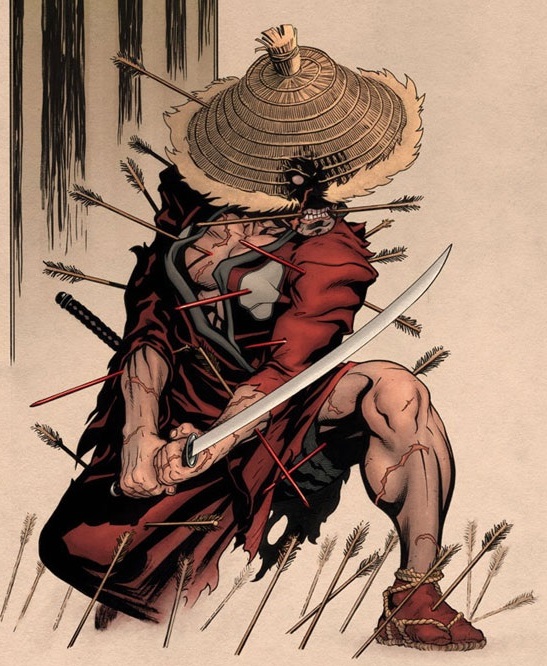
I was talking to a Martial Arts friend on the weekend and we were speaking about members of dojo’s and their training. As our conversation progressed the word “Ronin” was used, I thought what an interesting word to describe students that have left their dojo’s for one reason or another, but appropriate as well… The Lost Warrior
Most people have heard of a code that Martial Artist follow, I’ve even heard the mis-conception that this special code is used only with black belts and higher ranks… This code is actually called the Bushido Shosinshu (The Code of the Samurai). Today this code is still a very strong guide for us to follow, I for one, am thankful that it’s not quiet as intense today as it was several hundred years ago.
With a Samurai following the Bushido Shosinshu, a samurai was expected to commit Seppuku (also known as “hara kiri” — a ritual suicide) upon the loss of his master or Lord. Should the Samurai chose not to honor the code, he or she was their own and meant to suffer great shame. This ritual would be completed by the Samurai being on his knees and using a “Tanto” a single edged bladed weapon, about the size of a large butcher knife. The Tanto was often referred to as the Honorable Weapon. The ritual Seppuku, would in most instances involve another person referred to as “The Second”. The Samurai completing the ritual would insert the Tantok approximately 3 inches to the left of the navel and pull the knife directly across the stomach to the right, once the stomach was cut open the knife would be turned with the blade up and then pulled up towards the chest. “The Second” at that moment would be given a sign by the Samurai completing the ritual, a nod of the head, shutting of the eyes and the Second would decapitate the Samurai with his or her own Katana, which then would restore the Samurai’s honor. The term Ronin was a very undesirable status imposed on a Samurai, the name brought shame and discrimination imposed by other samurai, their respective Clan and by daimyo or the feudal lords of Japan at that time.
Once a Ronin, the samurai would would still maintain his or her weapons, generally being a large sword (Katana) and a smaller sword (Wakizashi). Ronin used a variety of other weapons as well, depending on their lack of money, some would carry a bo-staff or a jo a or a walking stick called a yumi. Most of the weapons would be carried based on their training or the Ryu or school they studied from.
During the Edo period, changes in society class system and laws created a large increase in the number of Ronan in Japan. . During previous times before the Edo period, samurai were able to move between masters and would marry between classes and clans. However, during the Edo period, samurai were restricted, and were all forbidden to become employed by another master without their previous master’s permission.
Because the former samurai could not legally take up a new trade, or because of pride were loath to do so, many ronin looked for other ways to make a living with their swords. Those rōnin who wanted legal employment became mercenaries (killers for hire) that guarded trade caravans, or they would become bodyguards for wealthy merchants. Many others became criminals, operating as bandits and highway thieves, Ronin were known to operate, or serve as hired muscle for gangs that ran gambling rings, brothels, protection rackets, and other similar activities. Many were petty thieves and muggers. The criminal segment gave the rōnin of the Edo period a persistent reputation of disgrace, with the image of thugs, bullies, cutthroats, and wandering vagrants. Ronin, a Samurai without a Master.
If you’re interested in learning Jujitsu in Brockville, we invite you to contact Ancho Jujitsu by calling us at 613 340 8002 or visit us online at www.anchojj.com
Rob Andress / Sensei Ancho Jujitsu
Martial Arts in Brockville / Jujitsu in Brockville / Jiu Jitsu Brockville
